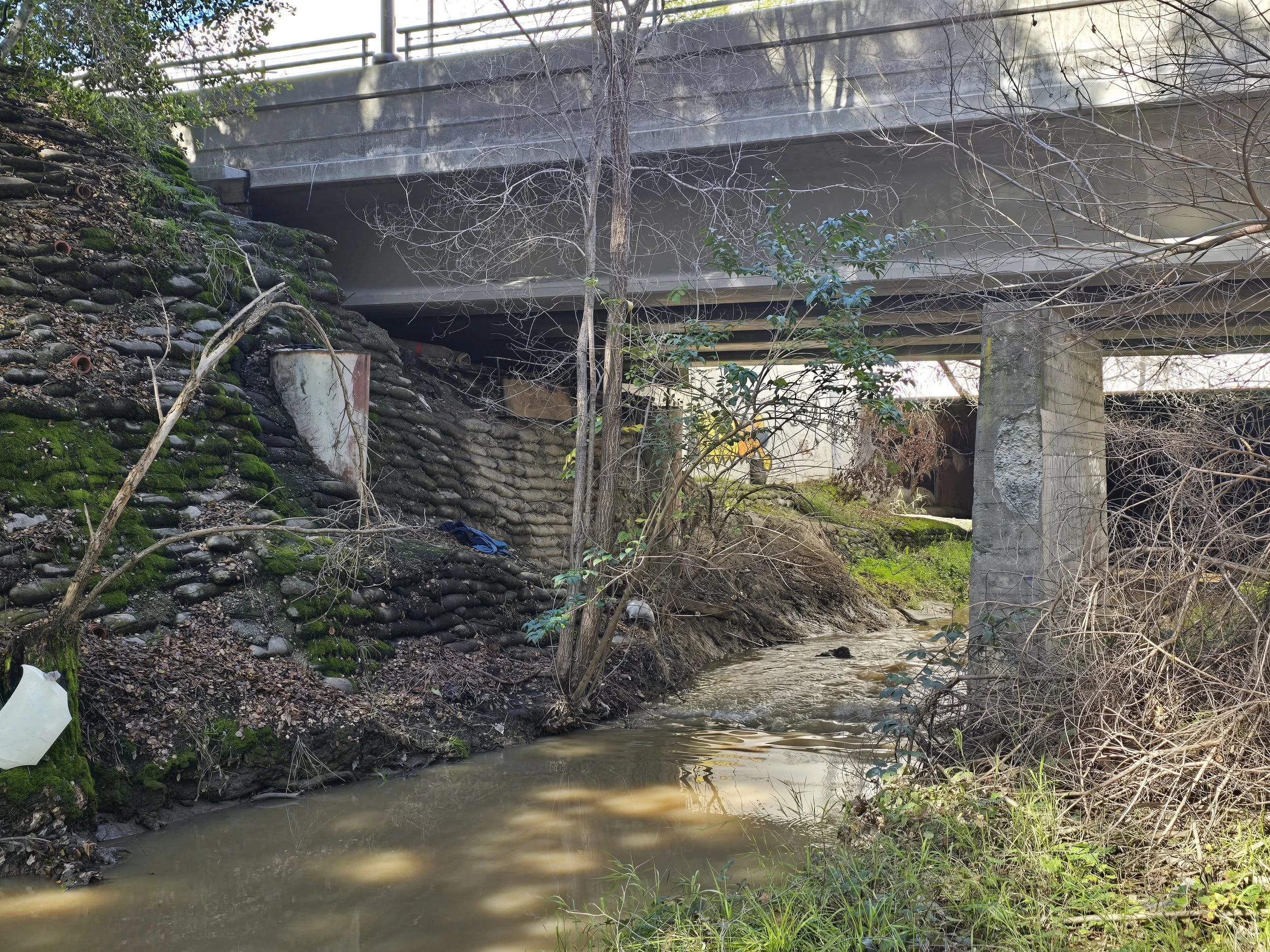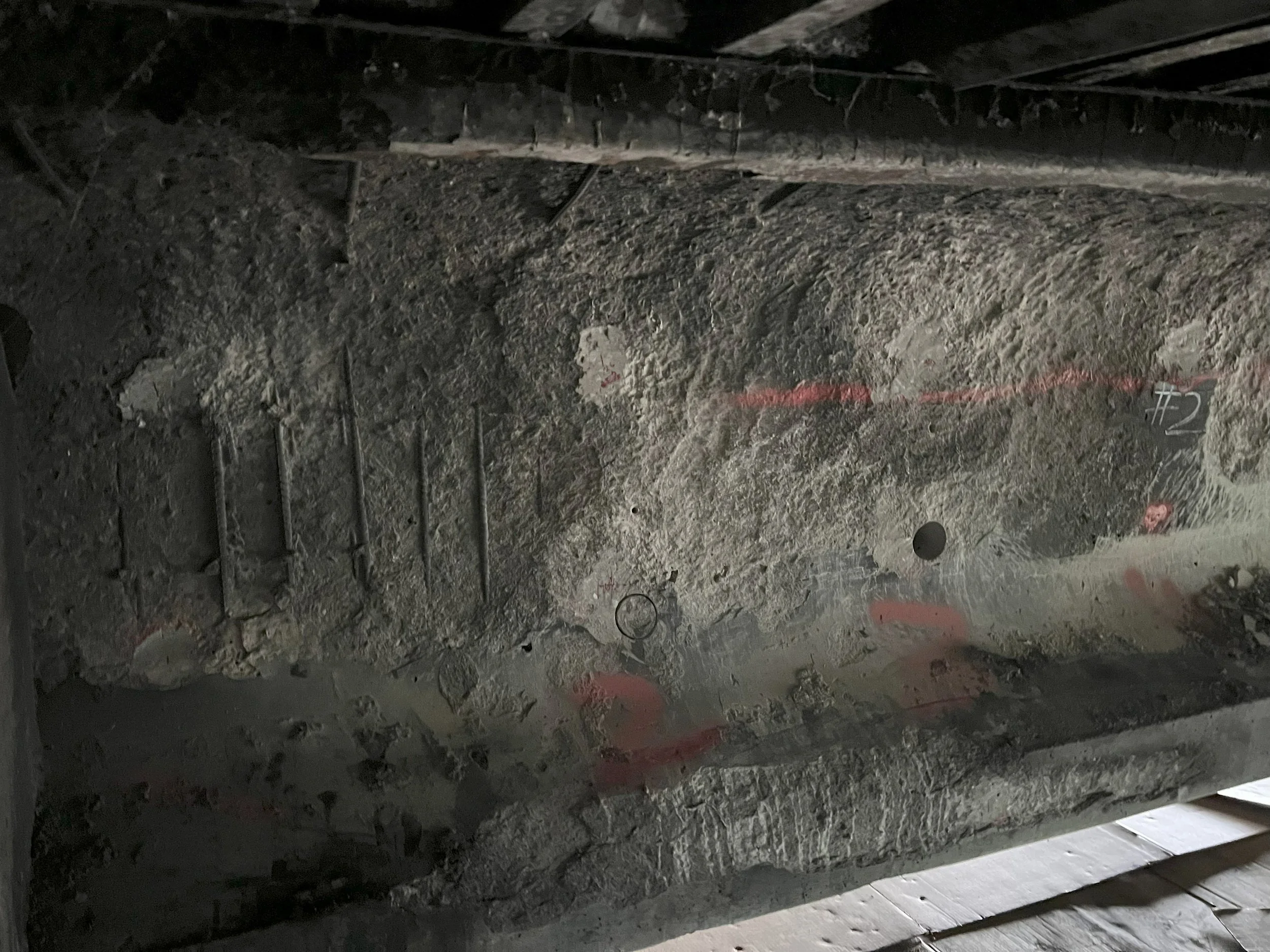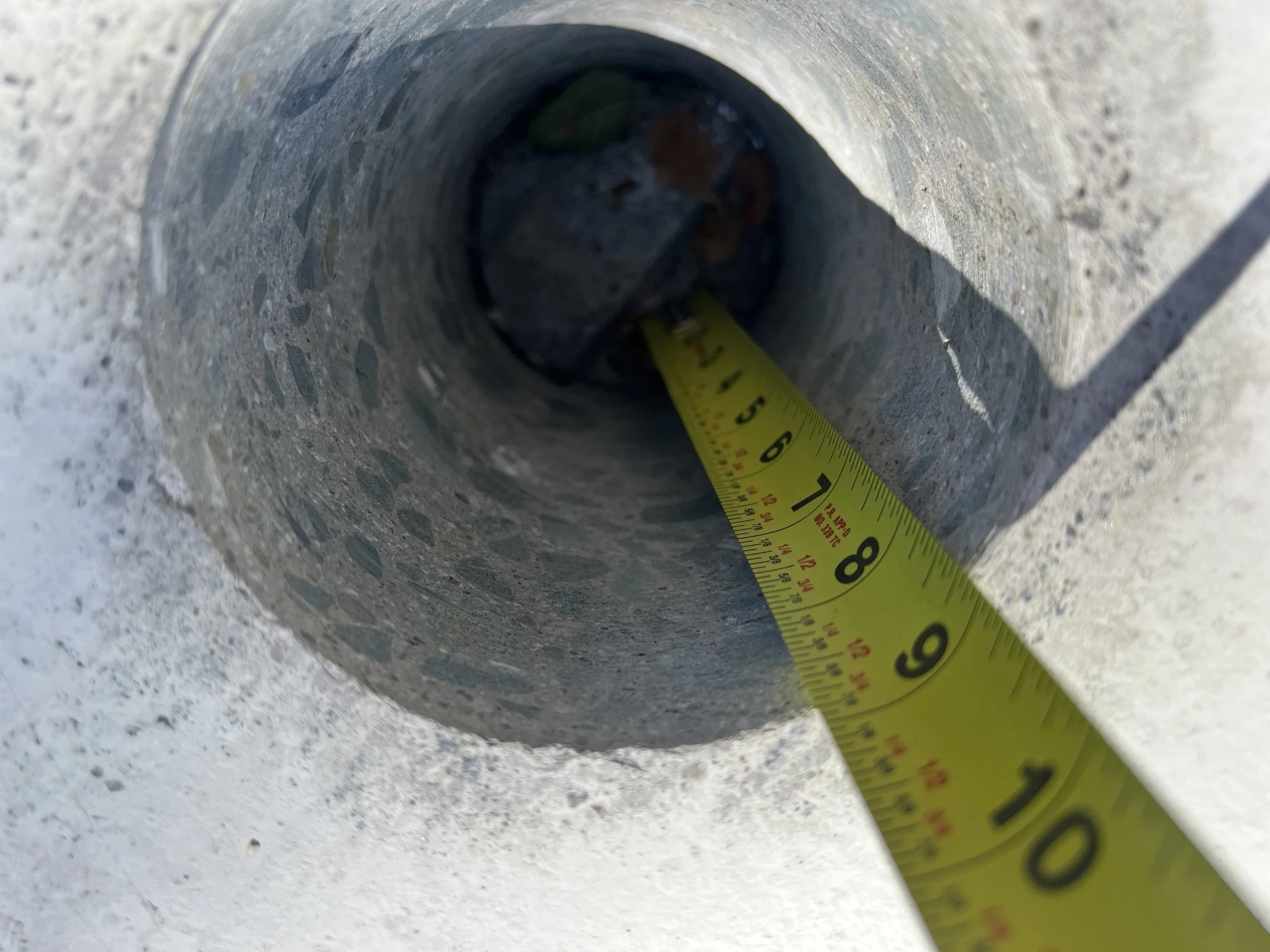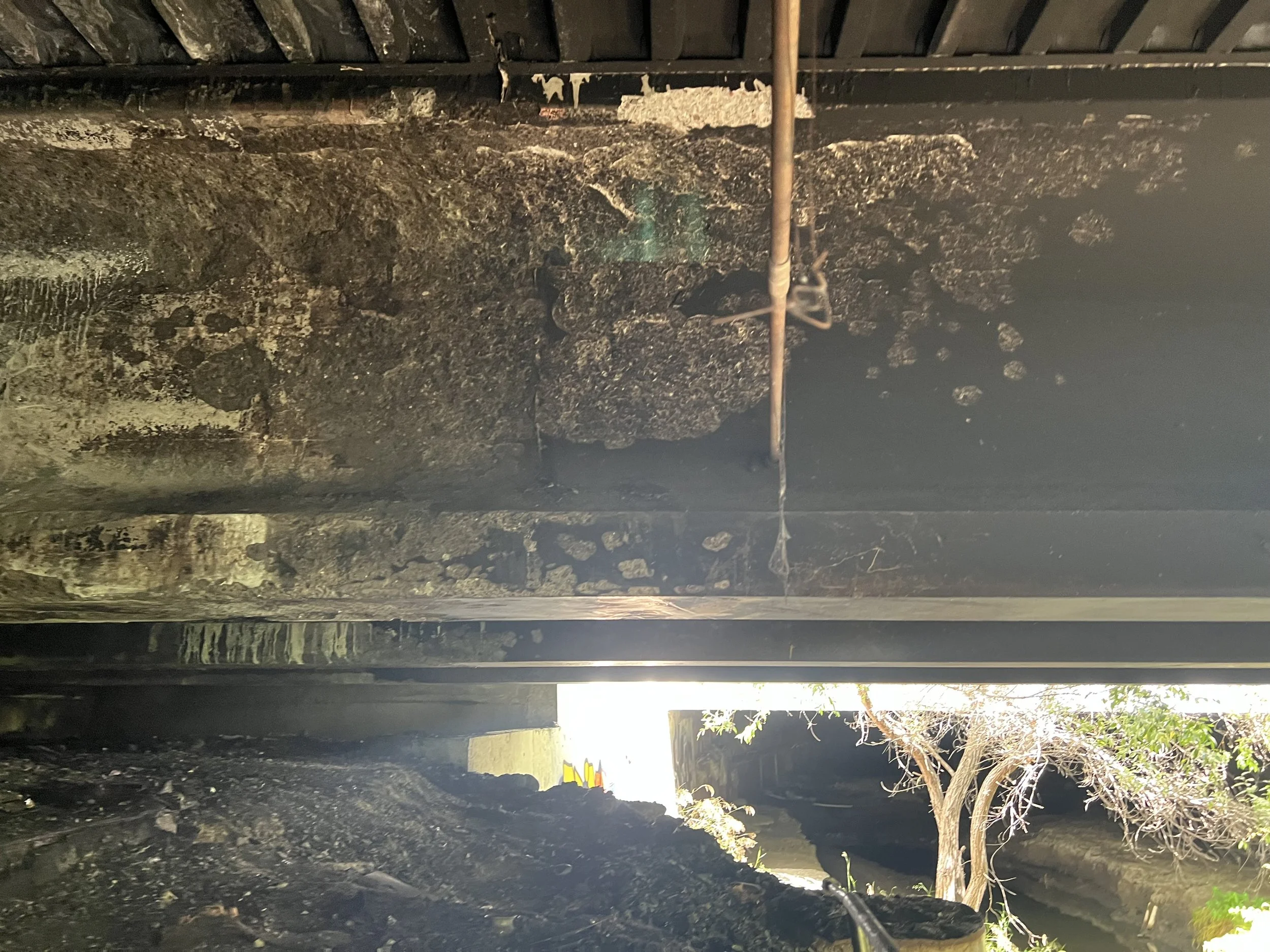Bridge Girder Damaged by Fire
JUNE 2023
WALNUT CREEK, CA
Overview
In response to a fire incident in June 2023, at a bridge in Walnut Creek, CA, Concrete Science, Inc. conducted a comprehensive fire damage assessment on bridge girders. The fire, caused by burning rubbish beneath the structure, lasted approximately 2.5 hours and subjected the girders to an extremely high temperature. The assessment aimed to determine the extent of structural degradation, evaluate concrete integrity, and identify areas requiring repair.
The work involved field & laboratory testing. Our engineers conducted pulse velocity tests, per ASTM C597, on fire exposed as well as non-fire exposed concrete girders. We identified critical areas and obtained core samples through the web of the girders. Our petrographer performed petrographic (microscopic) analysis, per ASTM C856, on core samples to determine the depth of fire damage, changes in hydrated cement, aggregate, and microcracking. The objective was to provide actionable recommendations to restore the bridge's integrity.
SCOPE OF WORK
-
Conducted pulse velocity testing, ASTM C597, on both fire-exposed and non-fire exposed sides of the bridge girders.
Compared pulse velocity readings across different sections of the girders to identify variations in concrete quality.
Documented visible fire damage, including spalling, cracking, and delamination.
Assessed surface conditions to determine the depth of fire damage and material degradation.
-
Obtained concrete core samples from both fire-exposed and non-fire exposed areas of the girders.
Conducted petrographic analysis to examine fire-induced effects, including cement paste alteration, aggregate reactions, microcracking.
Measured depth of carbonation and fire-induced changes in concrete composition.
Verified microstructural changes in fire-exposed samples using petrographic microscopy and chemical analysis.
-
Inspected condition of reinforcing steel and its bond with the concrete.
Evaluated concrete integrity using petrographic data and field test results.
Identified areas of significant material loss.
Provided targeted repair recommendations to address damage and enhance structural durability.
KEY FINDINGS
1. Field Testing Results from Condition Assessment
Fire-Exposed Side:
Web sections of all bridge girders showed minor surface spalling but remained structurally intact.
The areas of girder which exhibited severe spalling, cracking, and delamination, had significantly reduced pulse velocity readings. The pulse velocities in these areas were as low as 5,700 ft/sec, far below the remaining areas of the girder, indicating serious fire-induced deterioration.
Typical pulse velocity readings in the unaffected sections were higher, averaging 13,600 to 15,300 ft/sec, confirming that structural integrity remained largely intact in these areas.
Pulse velocity data showed a clear contrast between fire-damaged and unaffected sections, aiding in the targeted repair strategy.
Non-Fire Side:
No significant damage observed.
Pulse velocity readings ranged between 15,200 to 15,350 ft/sec, confirming that concrete remained in good structural condition with no fire-related deterioration.
2. Laboratory Testing & Petrographic Analysis Results
Fire-Affected Concrete Cores:
Surface spalling, black soot deposits, and severe microcracking detected.
Petrographic analysis revealed cement paste dehydration, carbonation, and fire-induced cracking within the concrete matrix.
Aggregate discoloration observed in concrete confirmed high temperature exposure.
Pulse velocity and petrographic results were consistent, confirming significant material degradation in fire-exposed areas.
Non-Fire Cores:
No fire-related deterioration.
Minor carbonation was observed.
Pulse velocity confirmed no internal voids or damage, ensuring structural stability.
RECOMMENDATIONS & SOLUTIONS
Structural Repairs & Girder Rehabilitation
Identified critical areas for repair.
Recommended repairs to the girder web & flanges.
Recommended repair to minimize future carbonation.
RECOMMENDATIONS
Recommended that the girder sections be rebuild.
Recommended further structural evaluation to determine optimal strengthening solutions for the long-term durability.
Recommended anti-carbonation coatings to mitigate potential reinforcement corrosion.
THE OUTCOME
Revisiting the site 2 years later (2025)…
The client received comprehensive, data-driven recommendations for bridge restoration. Findings from this fire damage assessment provided critical insights for informed decision-making regarding bridge maintenance and long-term structural preservation.
The bridge has been repaired and is now in regular use.
















